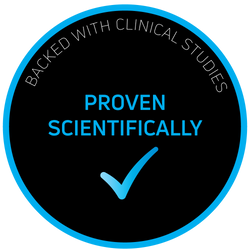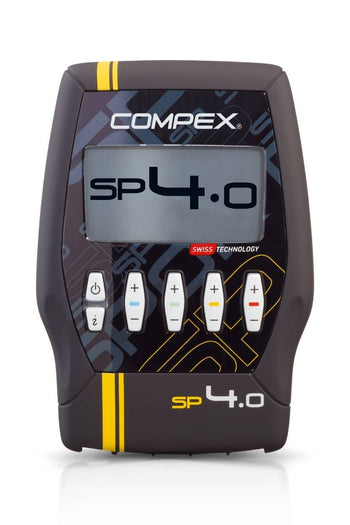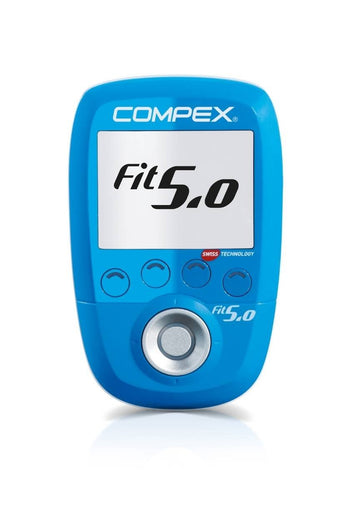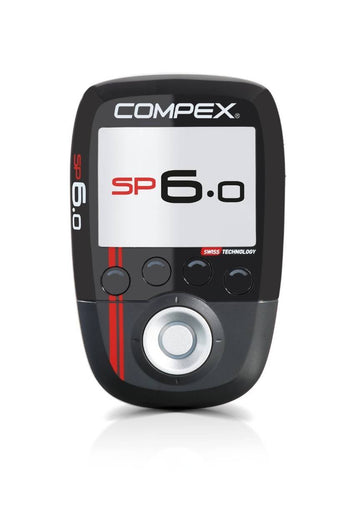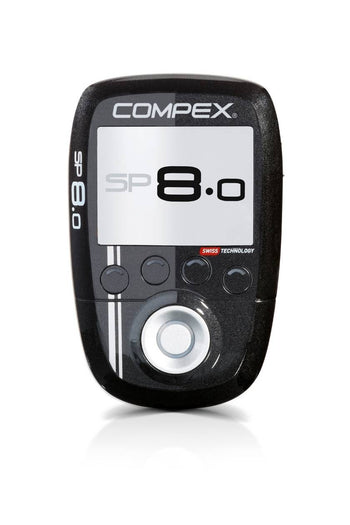Plantar fasciitis is a foot injury caused by stretching or rupture of the plantar fascia, a fibrous membrane that runs from the heel bone to the base of the toes. This membrane forms the “floor” of the foot. It affects around 1% of the population.
The main symptom is heel pain. Sportsmen and women are the most frequently affected, as they use all the structures in their feet more frequently and intensively. Find out how to use electrostimulation to relieve plantar fasciitis.
1st phase: inflammatory phase of the plantar aponeurosis
If you are in the acute inflammatory phase: the pain is severe, making it difficult to walk. You can use your Compex as follows:
Program
Pain Management TENS
Treatment duration
For the duration of the acute phase and the persistence of inflammatory signs.
Treatment schedule
At least 1 session every day. If required, sessions can be repeated several times a day.
Electrode placement
The aim is to cover the entire surface of the painful area with as many electrodes as necessary.


Body position
Place yourself in the most comfortable, indifferent position.
Setting the intensity
Desired effect: To obtain a pronounced but painless tingling sensation.
Gradually increase stimulation intensities until you feel a pronounced tingling sensation. Raising the stimulation intensity to a higher level is not more effective, and may trigger muscle contractions which are undesirable for this treatment.
For devices with mi-TENS technology:
As soon as a contraction is detected, the stimulation intensity is automatically reduced.
For stimulators not equipped with mi-TENS technology:
If a muscle contraction is detected, the intensity level should be reduced slightly by hand until no contraction occurs.
2nd phase: chronic phase of fasciitis
In the more chronic phase (which generally follows the previous one), the pain has diminished but still occurs, for example, when running, or you experience frequent discomfort.
Program
Muscle pain
Treatment duration
For the duration of the chronic phase, until pain signs have completely disappeared
We recommend consulting your doctor if no improvement is noted after the first week of use.
Treatment schedule
At least 1 session every day. If possible, 2 sessions per day, with at least 10 minutes' rest between each session.
It's important to remember that stimulating the arch of the foot can sometimes be difficult because of the thickness of the skin (calluses+++).
For this reason, you should try to avoid areas where the skin is thick, or where it may be necessary to abrade the skin with pedicure tools.
Electrode placement


Body position
Sitting or lying down in a comfortable position
Setting the intensity
Desired effect: To obtain pronounced muscle twitches while remaining comfortable.
The intensity should be increased until a muscular response resembling a flutter or a strong vibration is obtained, also known as muscle twitching. This muscular activity, which is very different from a real contraction, acts like a pump and is decisive in provoking a sharp increase in blood flow to the stimulated muscle. As you increase the intensity, the muscle twitching is initially discreet, then becomes increasingly pronounced before reaching a ceiling where the muscular response is maximal.
It is, however, possible to increase the intensity, but this does not bring any additional benefits.
FAQs for Plantar Fasciitis and Electro-Stimulation Treatment
1. How can electrostimulation help with plantar fasciitis
Electrostimulation, especially with TENS programs, can help reduce pain by increasing blood circulation and promoting muscle relaxation. In the acute phase, it helps manage pain, while in the chronic phase, it assists in muscle healing and reduces discomfort.
2. How often should I use electrostimulation for plantar fasciitis?
In the acute phase, use electrostimulation at least once per day. For the chronic phase, try 1-2 sessions daily, with at least 10 minutes of rest between sessions.
3. What is the best program for treating plantar fasciitis with electrostimulation?
For the acute phase, use the "Pain Management TENS" program. During the chronic phase, you can use the "Muscle Pain" or "Endorphin Treatment" programs, depending on your Compex model.
4. Can electrostimulation be used if I have calluses on my feet?
It can be difficult to stimulate the arch of the foot if you have thickened skin from calluses. Try to avoid these areas, and consider using a pedicure tool to smooth the skin before applying the electrodes.
5. Should I stretch my foot during electrostimulation for plantar fasciitis?
Stretching during electrostimulation is not necessary. The primary focus should be on applying the proper intensity and electrode placement to ensure muscle twitching, which helps improve blood flow to the affected area.
6. What is the desired effect when using electrostimulation for plantar fasciitis?
In the chronic phase, the goal is to achieve pronounced muscle twitches, which feel like a flutter or strong vibration. These twitches increase blood circulation and aid in tissue healing.
7. Can I increase the intensity of the electrostimulation for better results?
Yes, you can increase the intensity to achieve stronger muscle twitching. However, once you reach the maximum level where muscle twitching is most pronounced, increasing the intensity further may not provide additional benefits and could be uncomfortable.
8. Should I stop running if I have plantar fasciitis?
During the acute phase, it’s important to rest the foot and avoid running to prevent further irritation. Once the pain subsides and you're in the chronic phase, gradual return to running is possible, but always consult your doctor if the pain persists.
9. How long does it take to see results with electrostimulation for plantar fasciitis?
Some relief can be felt within a few days, especially for pain reduction. However, for lasting improvement, it may take 1-2 weeks of consistent use. If no improvement is seen within the first week, consult your doctor.
10. Can I combine electrostimulation with other treatments for plantar fasciitis?
Yes, electrostimulation can be combined with other treatments such as ice application, stretching, massage, and rehabilitation exercises to enhance overall recovery.
By following these guidelines and incorporating electrostimulation into your treatment plan, you can manage and relieve the pain associated with plantar fasciitis more effectively.

